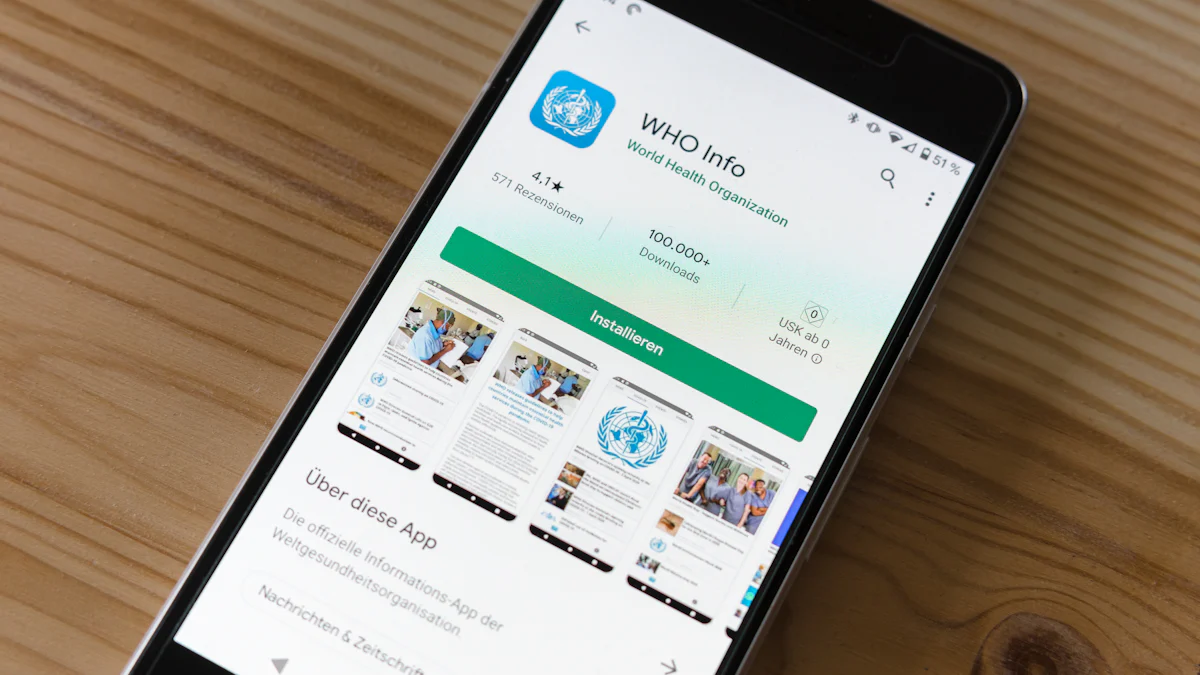Why Recruiters in Singapore Rely on Applicant Tracking Systems

Recruiters in Singapore face intense competition in the talent market. To stay ahead, many rely on an applicant tracking system to streamline their hiring processes. This technology helps you save time by automating repetitive tasks and filtering candidates efficiently. Over 86% of recruiters report that using ATS has reduced their time-to-hire, allowing them to focus on strategic decisions. Additionally, ATS improves candidate experience by ensuring smoother communication and faster responses. With its ability to bridge talent gaps, ATS gives you a significant edge in hiring top talent in Singapore’s dynamic job market.
Key Takeaways
Applicant Tracking Systems (ATS) significantly reduce time-to-hire by automating repetitive tasks, allowing recruiters to focus on strategic hiring decisions.
ATS enhances the candidate experience through streamlined communication, providing timely updates and reducing uncertainty for applicants.
Integrating an ATS with other HR technologies creates a seamless recruitment process, improving efficiency and reducing errors.
Using an ATS helps address diversity and inclusion goals by minimizing unconscious bias and tracking diversity metrics throughout the hiring process.
Modern ATS platforms offer features like customizable application forms and collaboration tools, which foster teamwork and improve decision-making among hiring teams.
Leveraging AI and machine learning within ATS can enhance recruitment strategies by predicting candidate success and refining hiring recommendations over time.
Choosing the right ATS involves considering usability, integration capabilities, and scalability to ensure it meets your organization's evolving recruitment needs.
What is an Applicant Tracking System (ATS)?
An applicant tracking system (ATS) is a powerful tool that simplifies and optimizes the recruitment process. It serves as a centralized platform where you can manage job postings, track applications, and streamline hiring workflows. By automating repetitive tasks, an ATS allows you to focus on strategic recruitment efforts, ensuring you attract and hire the best talent efficiently.
Definition and Purpose of an Applicant Tracking System
An applicant tracking system is software designed to assist recruiters in managing the entire hiring process. Its primary purpose is to organize and filter large volumes of applications, making it easier for you to identify qualified candidates. In Singapore’s competitive job market, this technology becomes essential for handling the overwhelming number of resumes recruiters receive daily. With an ATS, you can reduce manual labor, improve accuracy, and make data-driven hiring decisions.
Key Features of ATS Software
Modern ATS software comes equipped with a variety of features that enhance recruitment efficiency. Some of the key features include:
Candidate Tracking: Monitor where candidates are in the hiring process and keep their information organized.
Job Posting Integration: Post job openings across multiple platforms, including job boards and social media, with just a few clicks.
Customizable Application Forms: Create application forms tailored to your needs, ensuring you collect relevant information from candidates.
Collaboration Tools: Share candidate profiles and feedback with your hiring team to improve decision-making.
Analytics and Reporting: Gain insights into recruitment performance and identify areas for improvement.
For example, QuickHR’s Applicant Tracking System in Singapore offers tools to manage job postings, monitor application statuses, and streamline interview scheduling. These features ensure a seamless recruitment experience for both you and the candidates.
How ATS Integration Enhances Recruitment Processes
Integrating an ATS into your recruitment strategy can transform how you hire. By connecting the ATS with job boards, social media platforms, and other HR tools, you can manage all aspects of recruitment from a single dashboard. This integration eliminates the need to switch between multiple systems, saving you time and reducing errors.
An ATS also enhances the candidate experience. Features like automated email responses and real-time updates keep applicants informed throughout the hiring process. Additionally, tools like customizable career pages allow you to showcase your employer brand, attracting top talent to your organization.
In Singapore, where diversity and competition define the talent market, an ATS provides the technological edge you need. It enables you to handle multilingual and multicultural applications effectively, ensuring you find the right fit for your team.
Benefits of ATS for Recruiters in Singapore

Automating Recruitment Tasks
An ATS simplifies your recruitment process by automating repetitive tasks. Instead of manually sorting through hundreds of resumes, you can rely on the system to filter candidates based on specific criteria. This saves you valuable time and ensures that only the most qualified candidates move forward. According to surveys, 86% of recruiters in Singapore report that using an ATS has significantly reduced their time-to-hire. By automating tasks like resume screening, interview scheduling, and email communication, you can focus on strategic aspects of hiring, such as evaluating cultural fit and long-term potential.
Automation also minimizes errors in the recruitment process. For example, an ATS can automatically match job descriptions with candidate profiles, ensuring accuracy and consistency. This feature is especially useful in Singapore’s competitive job market, where efficiency can make a significant difference in securing top talent.
How ATS Helps Improve Candidate Experience
A positive candidate experience is crucial for attracting and retaining top talent. An ATS enhances this experience by streamlining communication and providing timely updates. Candidates appreciate receiving automated acknowledgments when they apply and real-time notifications about their application status. These features reduce uncertainty and build trust in your organization.
Additionally, ATS integration with career pages and job boards allows you to create a seamless application process. Candidates can easily submit their applications without encountering technical difficulties or lengthy forms. Surveys reveal that 75% of recruiters in Singapore use an ATS to strengthen the candidate experience. By leveraging these tools, you can ensure that candidates view your organization as professional and efficient.
Enhancing Collaboration Among Hiring Teams
Effective collaboration is essential for making informed hiring decisions. An ATS fosters teamwork by centralizing candidate information and enabling easy access for all team members. You can share candidate profiles, leave feedback, and track progress in real time. This transparency ensures that everyone involved in the hiring process stays aligned.
Collaboration tools within an ATS also eliminate the need for lengthy email chains or scattered spreadsheets. Instead, your team can communicate directly within the platform, saving time and reducing misunderstandings. In Singapore’s fast-paced recruitment landscape, this streamlined approach helps you make quicker and more accurate decisions.
Moreover, analytics and reporting features in an ATS provide insights into team performance. You can identify bottlenecks in the recruitment process and address them proactively. This data-driven approach not only improves efficiency but also enhances the overall quality of your hires.
Reducing Time-to-Hire in a Competitive Market
Reducing the time it takes to hire is crucial in Singapore’s competitive job market. An applicant tracking system (ATS) helps you achieve this by streamlining every stage of the recruitment process. Instead of manually sorting through resumes, the system automatically filters applications based on predefined criteria. This ensures that only the most qualified candidates reach your shortlist, saving you hours of effort.
Recruiters in Singapore have reported significant improvements in their hiring speed after adopting an ATS. According to surveys, 86% of recruiters stated that using an ATS has reduced their time-to-hire. This efficiency allows you to act quickly when identifying top talent, ensuring you don’t lose candidates to competitors.
An ATS also accelerates communication with candidates. Automated email templates and scheduling tools enable you to send interview invitations or follow-up messages instantly. These features eliminate delays and keep the hiring process moving forward. Faster communication not only benefits you but also enhances the candidate experience, as applicants appreciate timely updates about their status.
Additionally, the system integrates seamlessly with job boards and career pages, allowing you to post openings and collect applications in one place. This centralized approach reduces the time spent managing multiple platforms. By leveraging these tools, you can focus on evaluating candidates and making informed decisions rather than getting bogged down by administrative tasks.
In Singapore’s fast-paced recruitment environment, speed is often the key to securing the best talent. An ATS equips you with the tools to stay ahead, ensuring you can hire efficiently without compromising on quality.
Addressing Singapore’s Unique Recruitment Challenges with ATS
Navigating a Competitive Talent Market
Singapore’s job market is highly competitive, with recruiters constantly vying for top talent. The sheer volume of applications can overwhelm even the most experienced hiring teams. An applicant tracking system (ATS) helps you tackle this challenge by streamlining the recruitment process. It filters applications based on predefined criteria, ensuring that only the most qualified candidates make it to your shortlist. This efficiency allows you to focus on engaging with top-tier candidates instead of sifting through irrelevant resumes.
An ATS also enables faster decision-making. With features like automated resume screening and real-time updates, you can reduce delays in the hiring process. Surveys reveal that 86% of recruiters report a significant reduction in time-to-hire after adopting an ATS. In a fast-paced market like Singapore, this speed gives you a competitive edge, ensuring you secure the best talent before your competitors do.
Supporting Diversity and Inclusion in Hiring
Diversity and inclusion are critical priorities for organizations in Singapore. The city-state’s multicultural workforce demands a hiring approach that values varied perspectives and backgrounds. ATS integration supports these goals by minimizing unconscious bias in the recruitment process. For example, the system can anonymize candidate information, such as names or photos, during the initial screening. This ensures that decisions are based solely on qualifications and experience.
Additionally, an ATS allows you to track diversity metrics throughout the hiring process. You can monitor the representation of different groups among applicants and hires, ensuring alignment with your organization’s diversity goals. By leveraging these insights, you can create a more inclusive workplace that reflects Singapore’s rich cultural tapestry.
The system also simplifies compliance with local employment laws. Singapore has strict regulations to ensure fair hiring practices. An ATS helps you stay compliant by maintaining detailed records of all recruitment activities. This not only protects your organization but also builds trust with candidates who value transparency and fairness.
Managing a Multilingual and Multicultural Workforce
Singapore’s workforce is both multilingual and multicultural, presenting unique challenges for recruiters. Candidates often submit applications in different languages, making it difficult to evaluate them consistently. An ATS addresses this issue by offering language processing tools that standardize and translate application data. This ensures that every candidate receives equal consideration, regardless of their language preference.
The system also helps you tailor your recruitment strategy to Singapore’s diverse talent pool. For instance, you can customize job postings to appeal to specific cultural or linguistic groups. ATS integration with career pages allows you to highlight your organization’s commitment to diversity, attracting candidates from various backgrounds.
Collaboration tools within the ATS further enhance your ability to manage a multicultural workforce. By centralizing candidate information, the system ensures that all team members have access to the same data. This fosters better communication and alignment, enabling you to make informed hiring decisions that reflect your organization’s values.
In Singapore’s dynamic job market, addressing these challenges effectively is crucial. An ATS equips you with the tools to navigate complexity, ensuring a seamless and inclusive recruitment process.
The Role of ATS in Future-Proofing Recruitment

Leveraging AI and Machine Learning in ATS
Artificial intelligence (AI) and machine learning have transformed how you approach recruitment. Modern ATS uses these technologies to analyze vast amounts of data and identify patterns that improve hiring decisions. For example, AI-powered tools can predict which candidates are most likely to succeed in a role based on their skills and experience. This predictive capability helps you focus on the best talent without wasting time on unqualified applicants.
Machine learning enhances the system’s ability to adapt over time. As you use the ATS, it learns from your hiring preferences and refines its recommendations. This ensures that the system becomes more accurate and efficient with every recruitment cycle. Additionally, AI-driven features like chatbots can engage with candidates, answering their questions and guiding them through the application process. These tools save you time while improving the candidate experience.
By leveraging AI and machine learning, you future-proof your recruitment strategy. These technologies enable you to stay ahead in Singapore’s competitive job market, ensuring you attract and hire top talent efficiently.
The Importance of ATS Integration with HR Technologies
ATS integration with other HR technologies creates a seamless recruitment process. When your ATS connects with tools like payroll systems, performance management software, and employee onboarding platforms, you can manage the entire employee lifecycle from one place. This integration eliminates the need for manual data entry, reducing errors and saving you time.
For example, integrating your ATS with a human resource information system (HRIS) allows you to transfer candidate data directly into employee records once they are hired. This streamlines onboarding and ensures consistency across your HR processes. Additionally, integration with communication tools like email or messaging platforms enables you to coordinate with your team and candidates more effectively.
In Singapore’s fast-paced recruitment environment, efficiency is key. ATS integration simplifies your workflows, allowing you to focus on strategic tasks rather than administrative ones. By adopting an integrated approach, you enhance your ability to attract, hire, and retain top talent.
Preparing for Workforce Trends in Singapore
Singapore’s workforce is evolving rapidly, and staying prepared for these changes is essential. An ATS helps you adapt to emerging trends by providing the tools you need to remain competitive. For instance, as remote work becomes more common, you can use the system to manage virtual interviews and assess candidates from anywhere in the world. This flexibility ensures you don’t miss out on top talent, regardless of location.
The growing emphasis on diversity and inclusion also requires a proactive approach. An ATS allows you to track and analyze diversity metrics, ensuring your hiring practices align with your organization’s goals. Additionally, the system’s ability to handle multilingual applications makes it easier to recruit from Singapore’s diverse talent pool.
Workforce trends like upskilling and reskilling are also shaping the job market. An ATS can help you identify candidates with growth potential, ensuring you build a team that can adapt to future challenges. By leveraging these capabilities, you position your organization for long-term success in Singapore’s dynamic job market.
Choosing the Right Applicant Tracking System
Selecting the right applicant tracking system (ATS) is crucial for optimizing your recruitment process.
Factors to Consider When Selecting an ATS
When evaluating an ATS, focus on features that address your specific recruiting needs. Start by assessing the system’s usability. A user-friendly interface allows you and your team to navigate the platform effortlessly, reducing the learning curve. Look for customization options that let you tailor workflows to match your hiring process.
Additionally, prioritize systems that incorporate Applicant Tracking Systems that analyze large data sets, helping you identify top candidates based on skills and experience.
Scalability is essential if your organization plans to grow. Choose an ATS that can adapt to increasing hiring demands without compromising performance. Lastly, consider the system’s ability to provide actionable insights. Features like analytics dashboards and hiring metrics help you track recruitment performance and make data-driven decisions.
Popular ATS Solutions for Recruiters in Singapore
Several ATS platforms cater specifically to the needs of recruiters in Singapore. These solutions offer advanced features designed to address the challenges of a competitive talent market. For example, QuickHR provides tools for managing job postings, tracking applications, and scheduling interviews. Its multilingual support makes it ideal for Singapore’s diverse workforce.
Another popular choice is Workday Recruiting, which integrates seamlessly with other HR technologies. This platform uses AI to predict candidate success and streamline the hiring process. Greenhouse is another leading ATS, known for its emphasis on collaboration. It allows hiring teams to share feedback and track progress in real time, ensuring alignment throughout the recruitment process.
Each of these systems offers unique benefits. Evaluate them based on your organization’s priorities, such as ease of use, integration capabilities, or advanced analytics.
Best Practices for ATS Implementation
Implementing an ATS effectively requires careful planning. Begin by involving all stakeholders in the decision-making process. Gather input from hiring managers, recruiters, and IT professionals to ensure the system meets everyone’s needs. Once you’ve selected an ATS, provide comprehensive training for your team. Familiarity with the platform ensures smooth adoption and maximizes its potential.
Customize the system to align with your recruitment workflows. Tailor application forms, job posting templates, and communication tools to reflect your employer brand. Regularly update these elements to stay relevant in a dynamic job market.
Monitor the system’s performance using hiring metrics. Track key indicators like time-to-hire, candidate satisfaction, and diversity representation. Use this data to identify areas for improvement and refine your recruitment strategy. Finally, maintain open communication with your ATS provider. Regular updates and support ensure the system continues to meet your organization’s evolving needs.
By following these best practices, you can unlock the full potential of your ATS, enhancing efficiency and improving the candidate experience.
Applicant Tracking Systems (ATS) have become indispensable for recruiters in Singapore. They simplify hiring by automating tasks like resume screening and interview scheduling, allowing you to focus on strategic decisions. Tools like SmartATS and BrioHR’s ATS enhance efficiency with features such as predictive analytics and candidate matching. By adopting an ATS, you gain a competitive edge in Singapore’s fast-paced job market. These systems also help you future-proof your recruitment strategies by integrating advanced technologies. Investing in the right ATS, such as HireME or Employment Hero's ATS, ensures long-term success in attracting and retaining top talent.
FAQ
What is an Applicant Tracking System (ATS)?
An Applicant Tracking System (ATS) is software that helps you manage the recruitment process efficiently. It allows you to organize job postings, track applications, and automate repetitive tasks like resume screening. By using an ATS, you can focus on hiring the best talent while saving time and effort.
Why do recruiters in Singapore rely on ATS?
Recruiters in Singapore face a competitive talent market with a high volume of applications. An ATS simplifies the hiring process by filtering candidates, automating tasks, and ensuring compliance with local employment laws. It also enhances the candidate experience, which is crucial for attracting top talent.
How does an ATS improve the candidate experience?
An ATS improves the candidate experience by streamlining communication and providing timely updates. Features like automated email responses and real-time notifications keep candidates informed about their application status. This transparency builds trust and ensures a positive impression of your organization.
Can an ATS help with diversity and inclusion in hiring?
Yes, an ATS can support diversity and inclusion by reducing unconscious bias. For example, it can anonymize candidate information during the initial screening process. Additionally, it allows you to track diversity metrics, ensuring your hiring practices align with your organization’s goals.
Is an ATS suitable for managing multilingual applications?
Absolutely. Many ATS platforms offer language processing tools that standardize and translate application data. This feature is especially useful in Singapore, where the workforce is multilingual and multicultural. It ensures fair evaluation of all candidates, regardless of language preference.
How does an ATS ensure compliance with Singaporean employment laws?
An ATS helps you stay compliant by maintaining detailed records of all recruitment activities. It ensures transparency and fairness in the hiring process, which aligns with Singapore’s strict employment regulations. This not only protects your organization but also builds trust with candidates.
What features should I look for when choosing an ATS?
When selecting an ATS, prioritize features like user-friendly interfaces, integration capabilities, and automation tools. Look for systems that offer analytics dashboards, customizable workflows, and AI-powered candidate matching. These features enhance efficiency and help you make data-driven hiring decisions.
Can an ATS integrate with other HR technologies?
Yes, most modern ATS platforms integrate seamlessly with other HR tools like payroll systems, performance management software, and onboarding platforms. This integration streamlines the entire employee lifecycle, from recruitment to retention, saving you time and reducing errors.
How does an ATS help reduce time-to-hire?
An ATS reduces time-to-hire by automating tasks like resume screening and interview scheduling. It filters candidates based on predefined criteria, ensuring only qualified applicants move forward. Faster communication tools within the system also eliminate delays, allowing you to hire quickly and efficiently.
Are there popular ATS solutions for recruiters in Singapore?
Yes, several ATS platforms cater to the needs of recruiters in Singapore. Examples include QuickHR, known for its multilingual support, and Workday Recruiting, which integrates with other HR technologies. Greenhouse is another popular choice, offering collaboration tools for hiring teams. Evaluate these options based on your specific requirements.
See Also
Effective Ways to Utilize an Applicant Tracking System
Boosting Recruitment Clarity with Applicant Tracking Systems
Identifying Top Candidates Using Applicant Tracking Systems
Essential Features of Applicant Tracking Systems for Hiring
Regional Recruitment Strategies Using Applicant Tracking Systems
From recruiting candidates to onboarding new team members, MokaHR gives your company everything you need to be great at hiring.
Subscribe for more information

